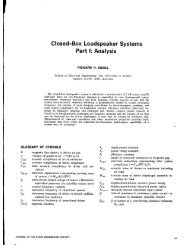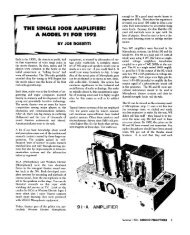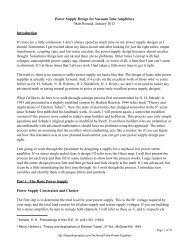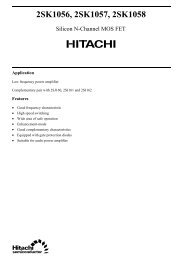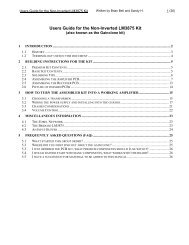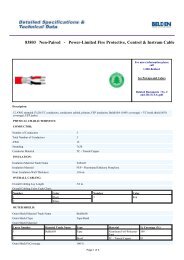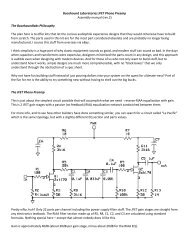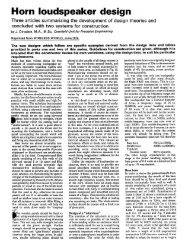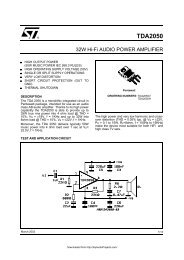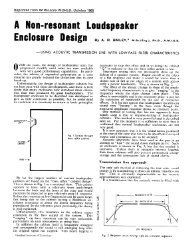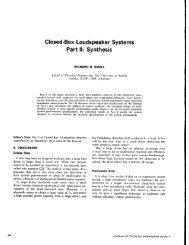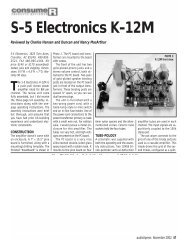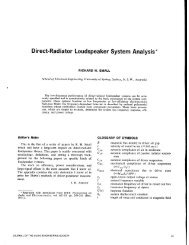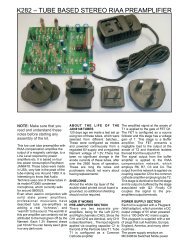A Model of Open-Baffle Loudspeakers - DIY Audio Projects
A Model of Open-Baffle Loudspeakers - DIY Audio Projects
A Model of Open-Baffle Loudspeakers - DIY Audio Projects
You also want an ePaper? Increase the reach of your titles
YUMPU automatically turns print PDFs into web optimized ePapers that Google loves.
Figure 10. The parameters describing the average distance from the edge.<br />
For a rectangular baffle the distance can be written as<br />
Equation 13 r(0) = & ,<br />
where r, is the distance from the edge under study and 8 the angle calculated for that particular<br />
edge. If the edge is delimited by angles 8,,, and 0,,, then the average distance is<br />
Equation 14<br />
Taking the uppermost edge as an example, the minimum and maximum angles for an edge can be<br />
defined from the geometry <strong>of</strong> the baffle as<br />
Equation 15<br />
X0<br />
%in = -arcsin<br />
x0” +Y;<br />
0 = arcsin Xl ’<br />
max<br />
x: +Y:<br />
from which the average distance for this particular edge can be written as<br />
Equation 16 rave, r =<br />
1<br />
11<br />
Xl X0<br />
arcsin + arcsin<br />
xf +yo2 4 +Yo2<br />
Repeating this for other edges yields the total average distance, from which can be computed the<br />
estimate for the on-axis sound pressure at distance r<br />
. 2<br />
Equation 17 p = zp~~~<br />
13



